18th Century George III Mahogany Serpentine Chest or Commode
Attributed to Henry Hill, Marlbrough
SOLD
Request Information
Follow Us
18th Century George III Mahogany Serpentine Chest or Commode
A fine George III mahogany serpentine commode, England, circa 1770. Attributed to Henry Hill, Marlbrough.
The three graduated drawers retain their original gilt brass handles over a unique carved apron and flanked by molded angles continuing into the shaped cabriole feet. The chest is in superb and original country house condition.
Attribution
Henry Hill was active in Marlborough Wiltshire from circa 1740 until his death in 1778 where he ran a diverse business encompassing furniture making, coach making, house agency and auctioneering. He was described in his obituary in 1778 as ‘one of the most eminent cabinet-makers and upholsterers in the Kingdom’ which was considered a great tribute to a cabinet maker working outside London. His clients were predominately Wiltshire landowners including the 9th Duke of Somerset at Maiden Bradley, Paul Methuen at Corsham Court, Henry Hoare at Stourhead, and Earl Bathurst at Cirencester Park. Hill was clearly aware of the prevailing London fashions and would have had access to publications including Chippendale’s designs for French Commode Tables (The Gentleman and Cabinet-Maker’s Director 1st Edition1754; Plate LXVI 3rd Edition 1763). He was also known to have employed immigrant labour (most likely German). All this is reflected in the designs of his furniture. His French Commodes were made with a number of variations dependent on his clients’ needs and budgets but invariably with three drawers and of serpentine form with flame figured veneers or marquetry, ormolu-mounted corners and a lobed front apron. The most documented commissions were for Lord Delaval (see bombe marquetry commode sold Bonhams London 19 October 2011). It seems likely that Hill had contact with Pierre Langlois with some of the mounts on his commodes being attributed to Langlois.
Condition
Fabulous and original country house condition with richly patinated surfaces!
Provenance
The provenance of this chest is also very interesting as it belonged to the late Major General Mark Bond, who was the last member of the Bond family to live at Moigne Combe. General Bond had an illustrious military career; he enlisted as a rifleman in 1940 following the Blitz of London. Major-General Bond served at the Battle of El-Alamein and the capture of Tunis. In 1943 Mark Bond was taken as a POW but managed to pull off a daring escape from his transport train. He was only recaptured after trying to steal supplies from the Germans. Major-General Mark Bond also served as aide de camp to Field Marshal Montgomery, NATO Deputy Supreme Allied Commander in Europe 1950. A letter from Field Marshal Montgomery thanking Mark Bond for his service is present at Moigne Combe. During his fascinating life he had a distinguished military career, held prestigious Dorset offices and maintained an active approach to conservation (planting over 60,000 trees on his estate).
Literature
Dimensions
PREVIOUSLY SOLD

William and Mary Kingwood or ‘Princes Wood’ Oyster Table Box
William & Mary Kingwood Oyster Table Box or ‘Princes Wood’, Circa 1690. England. Originally designed to store tableware and was given the apt name ‘table box’.
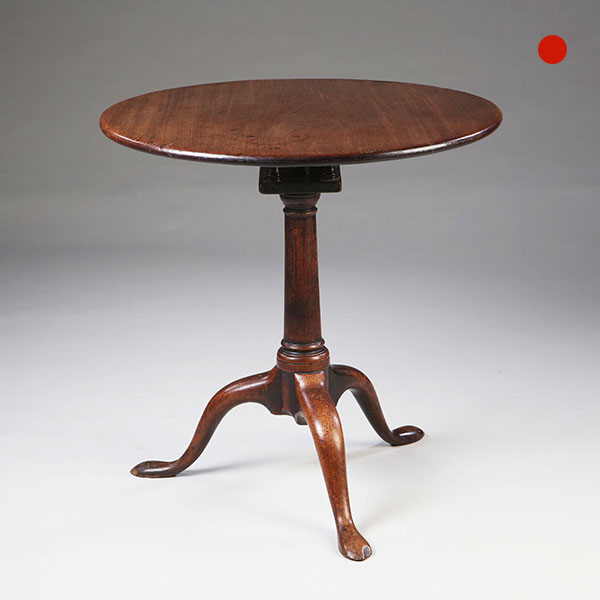
George III Mahogany Tripod or Snap
George III Mahogany Tripod Table or Snap-Top Table with Birdcage circa 1770. England SOLD Follow UsGeorge III Mahogany Tripod or Snap-Top Table with Birdcage, circa 1770. England Of solid mahogany, the gun barrel and one-piece top are raised...
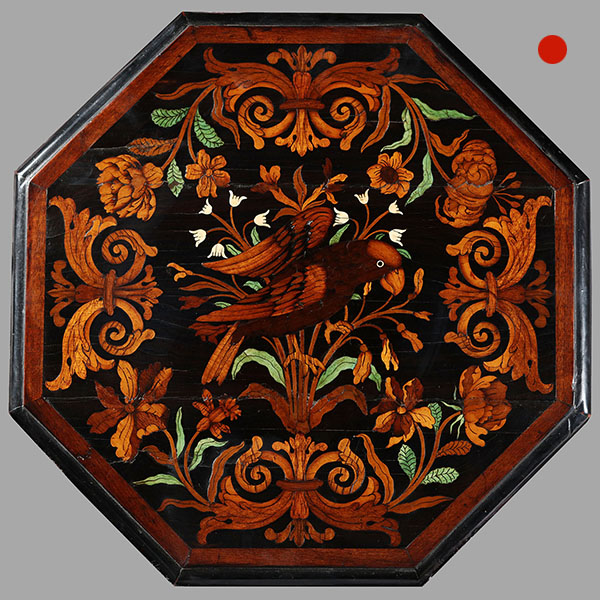
17th-Century Floral Marquetry Candle Stand
17th-Century Floral Marquetry Candle Stand, 1675-1690. The Metropolitan Museum of Art in New York decided to auction a number of pieces of exceptional merit.
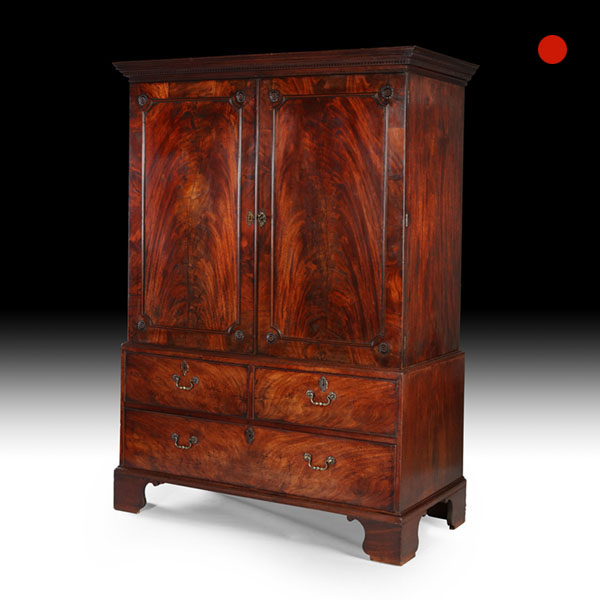
George III Mahogany Linen Press Wardrobe
George III Mahogany Linen Press Wardrobe 1760 England SoldGeorge III Mahogany Linen Press Wardrobe A fine George III mahogany linen press in outstanding original condition. The press was obviously made to exceed with the cabinetmaker using...
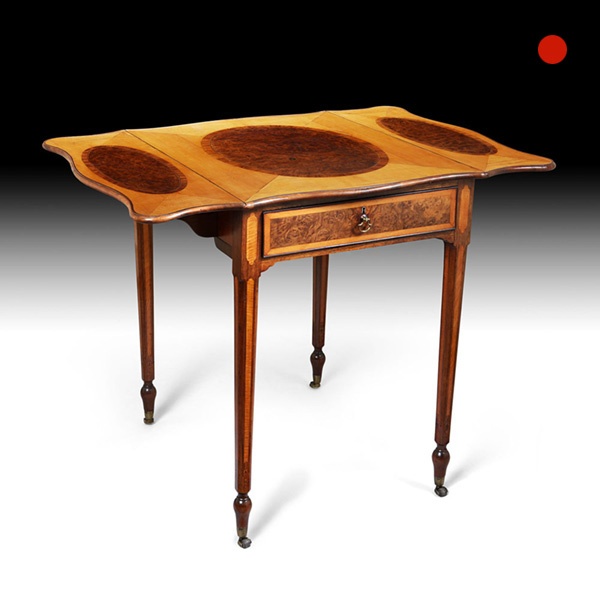
18th Century George III Satinwood and Pollard Oak Pembroke Occasional Table
An exceptionally fine and rare George III satinwood and pollard oak Pembroke table. The padauk top is veneered in satinwood cantered by large ovals of tightly clustered burr pollard oak reserves, bordered in princess wood and lined with fine ebony and box stringing.
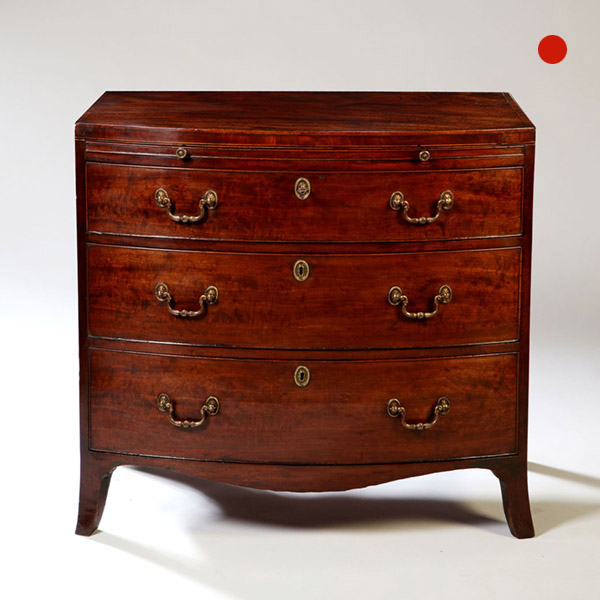
George III Sheraton period bow-fronted caddy topped mahogany chest of drawers
A fine George III Sheraton period bow-fronted mahogany chest of drawers with brushing slide. The chest has the perfect time aged colour to its original wax finished surface and has truly commendable proportions. I love everything about this outstanding and original piece.

William and Mary Kingwood or ‘Princes Wood’ Oyster Table Box
William & Mary Kingwood Oyster Table Box or ‘Princes Wood’, Circa 1690. England. Originally designed to store tableware and was given the apt name ‘table box’.

George III Mahogany Tripod or Snap
George III Mahogany Tripod Table or Snap-Top Table with Birdcage circa 1770. England SOLD Follow UsGeorge III Mahogany Tripod or Snap-Top Table with Birdcage, circa 1770. England Of solid mahogany, the gun barrel and one-piece top are raised...

17th-Century Floral Marquetry Candle Stand
17th-Century Floral Marquetry Candle Stand, 1675-1690. The Metropolitan Museum of Art in New York decided to auction a number of pieces of exceptional merit.

George III Mahogany Linen Press Wardrobe
George III Mahogany Linen Press Wardrobe 1760 England SoldGeorge III Mahogany Linen Press Wardrobe A fine George III mahogany linen press in outstanding original condition. The press was obviously made to exceed with the cabinetmaker using...

18th Century George III Satinwood and Pollard Oak Pembroke Occasional Table
An exceptionally fine and rare George III satinwood and pollard oak Pembroke table. The padauk top is veneered in satinwood cantered by large ovals of tightly clustered burr pollard oak reserves, bordered in princess wood and lined with fine ebony and box stringing.

George III Sheraton period bow-fronted caddy topped mahogany chest of drawers
A fine George III Sheraton period bow-fronted mahogany chest of drawers with brushing slide. The chest has the perfect time aged colour to its original wax finished surface and has truly commendable proportions. I love everything about this outstanding and original piece.
YOU MAY ALSO LIKE
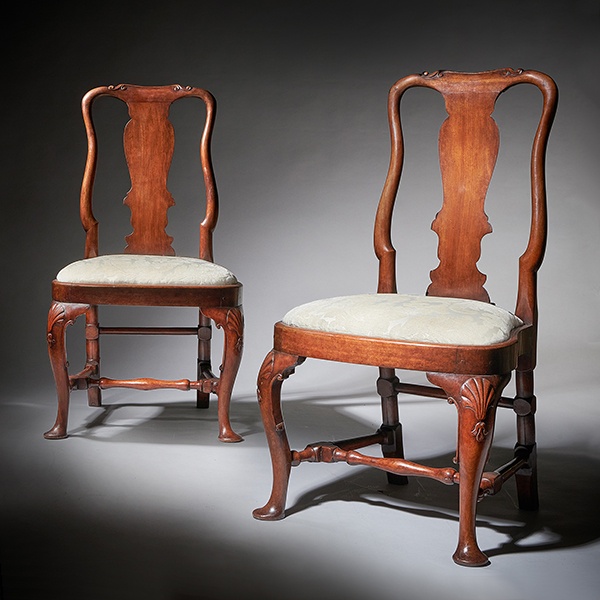
Pair of George I 18th Century Carved Mahogany Chairs, Circa 1720
Pair of George I 18th Century Carved Mahogany Chairs, Circa 1720 £4,400Follow UsPair of George I 18th Century Carved Mahogany Chairs, Circa 1720 A superb pair of early 18th-century carved George I mahogany chairs, circa 1720. Each chair is of...
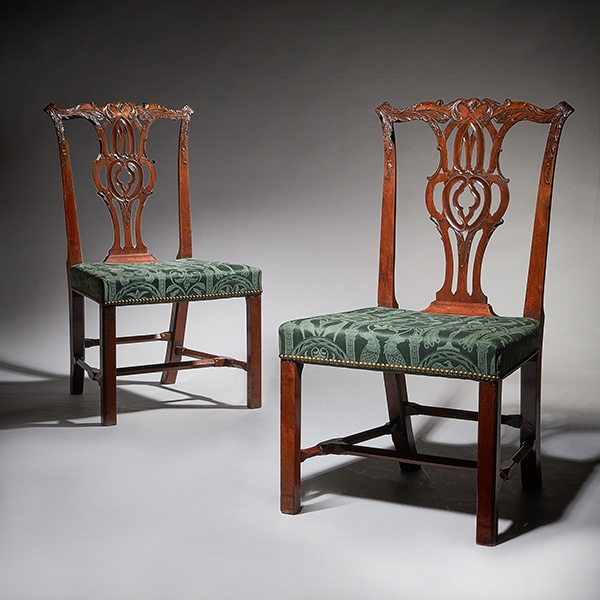
Pair of 18th Century George III Carved Mahogany Chippendale Chairs
Pair of 18th Century George III Carved Mahogany Chippendale Chairs £8,900Follow UsPair of 18th Century George III Carved Mahogany Chippendale Chairs A simply superb pair of carved George III mahogany chairs, C.1770. Condition Good. Wear...
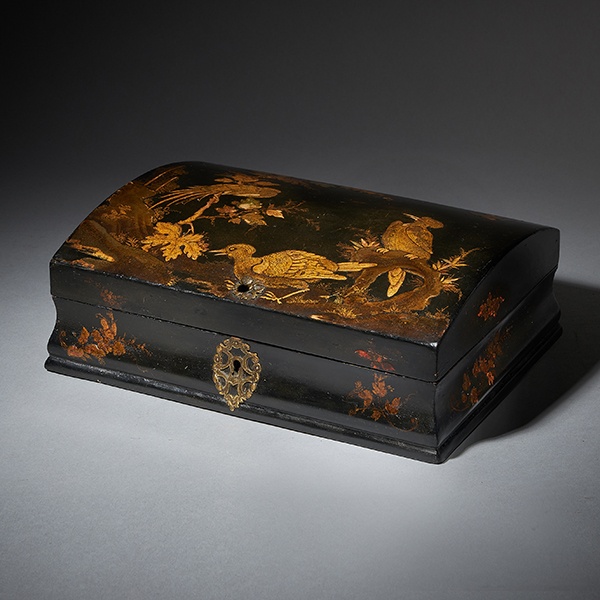
18th Century Japanned Chinoiserie Dome-Topped Box, Circa 1715-1725
18th Century Japanned Chinoiserie Dome-Topped Box, Circa 1715-1725 £3,800Follow Us18th Century Japanned Chinoiserie Dome-Topped Box, Circa 1715-1725 Early 18th century George I Japanned Chinoiserie dome-topped box, Circa 1715-1725. England or...
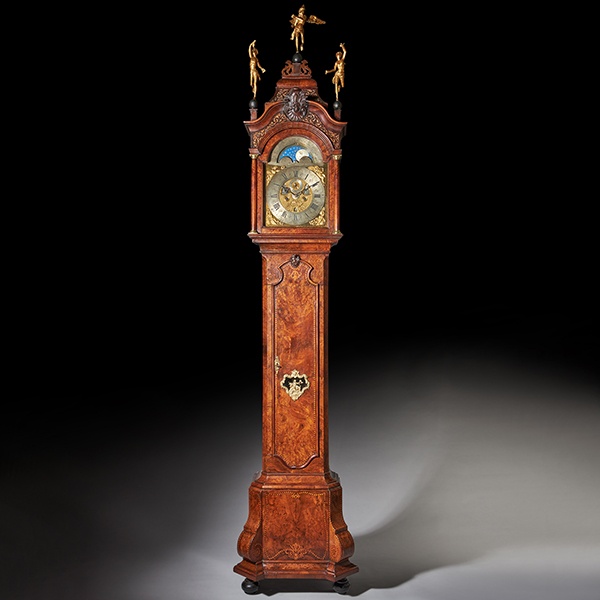
Magnificent 18th Century Striking Dutch Amsterdam Burl Walnut Longcase Clock
Magnificent 18th Century Striking Dutch Amsterdam Burl Walnut Longcase Clock £26,000Follow UsMagnificent 18th Century Striking Dutch Amsterdam Burl Walnut Longcase Clock An impressive Dutch longcase clock with a burr walnut veneered oak case,...

18th Century George III Mahogany Wine Cooler or Cellarette
18th Century George III Mahogany Wine Cooler or Cellarette £4,600Follow Us18th Century George III Mahogany Wine Cooler or Cellarette A fine and well-figured George III mahogany hexagonal wine cooler or cellarette on the original stand, C....

Striking 19th Century Carriage Clock with a Gilt-Brass Corniche Case by Grohé
Striking 19th Century Carriage Clock with a Gilt-Brass Corniche Case by Grohé £3,995 Follow UsStriking 19th Century Carriage Clock with a Gilt-Brass Corniche Case by Grohé Striking carriage clock with a gilt-brass corniche case by Grohé,...

Pair of George I 18th Century Carved Mahogany Chairs, Circa 1720
Pair of George I 18th Century Carved Mahogany Chairs, Circa 1720 £4,400Follow UsPair of George I 18th Century Carved Mahogany Chairs, Circa 1720 A superb pair of early 18th-century carved George I mahogany chairs, circa 1720. Each chair is of...

Pair of 18th Century George III Carved Mahogany Chippendale Chairs
Pair of 18th Century George III Carved Mahogany Chippendale Chairs £8,900Follow UsPair of 18th Century George III Carved Mahogany Chippendale Chairs A simply superb pair of carved George III mahogany chairs, C.1770. Condition Good. Wear...

18th Century Japanned Chinoiserie Dome-Topped Box, Circa 1715-1725
18th Century Japanned Chinoiserie Dome-Topped Box, Circa 1715-1725 £3,800Follow Us18th Century Japanned Chinoiserie Dome-Topped Box, Circa 1715-1725 Early 18th century George I Japanned Chinoiserie dome-topped box, Circa 1715-1725. England or...

Magnificent 18th Century Striking Dutch Amsterdam Burl Walnut Longcase Clock
Magnificent 18th Century Striking Dutch Amsterdam Burl Walnut Longcase Clock £26,000Follow UsMagnificent 18th Century Striking Dutch Amsterdam Burl Walnut Longcase Clock An impressive Dutch longcase clock with a burr walnut veneered oak case,...

18th Century George III Mahogany Wine Cooler or Cellarette
18th Century George III Mahogany Wine Cooler or Cellarette £4,600Follow Us18th Century George III Mahogany Wine Cooler or Cellarette A fine and well-figured George III mahogany hexagonal wine cooler or cellarette on the original stand, C....

Striking 19th Century Carriage Clock with a Gilt-Brass Corniche Case by Grohé
Striking 19th Century Carriage Clock with a Gilt-Brass Corniche Case by Grohé £3,995 Follow UsStriking 19th Century Carriage Clock with a Gilt-Brass Corniche Case by Grohé Striking carriage clock with a gilt-brass corniche case by Grohé,...






